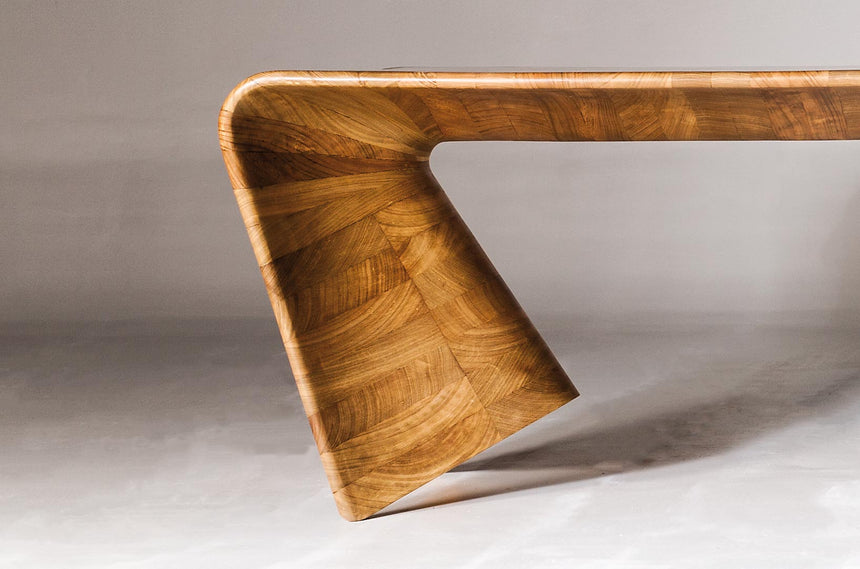Origin of Nama-d Studio. From a straight line to a curve.
February 2013. It has been a hard and long degree, sometimes too much, but I am finally graduated in Architecture. Many times one wonders if it is worth all the effort, all the time devoted, with little social life and so much academic pressure. The price to pay is high, but the personal reward is huge. Architecture changes your life. It changes the way you see things, it shows you how to look, to abstract, to synthesize, to try to grasp the essence of things, to face an empty role... These are basic exercises for any creative process, and all that demand has a reason.
As soon as I got graduated, I traveled and settled in London, where Marta was waiting for me. It’s an amazing city, full of stimuli, of opportunities, of fun, but it can also become extremely demanding. Like every great city, it is full of contrasts and sometimes contradictions, where life goes very fast, many things happen in a very short time. That experimental density is, initially, the great attraction of London. Over time, that very same thing ends up throwing you out; at least that was our case. London is a perfect passing city for restless minds. I can’t say that my beginning in London was difficult, I was very lucky. I arrived without a job, but fortunately it didn’t take long to do interviews and find it. AL_A gave me the opportunity to work on their team. The studio is wonderful, very young, daring and with a fresh spirit. I quickly felt very welcome by my new colleagues, who taught me the tools I needed to take an interest in digital design and manufacturing, and I had the opportunity to work at different scales of architecture and design. The experience was very rewarding. Working with young international people, with different formations to my own, different mentalities and cultures but related, was probably the best lesson I took from London. This marked a turning point in me as an architect and designer; I lost my fear of the curve. I learned how a curve was materialized, and from the curve to the surface. The mentality changed, I realized that the training I obtained in Madrid was technically very good but insufficient; insufficient in mental terms. London is a city much more open to design, to artists, to creators. There are no taboos, everything goes, everything is appreciated, and everything has a value. People express themselves as they want, dress as they want; it is, in short, a more modern city.
As I said before, London is a temporary city for many people, and two years later we decided that we had enough. We were able to absorb all that enrichment the city generously brought to us, and we headed back home. Madrid may be a little less international than London, but it is a city whose quality of life is far superior to that of London and whose unique spirit, identity and personality make Madrid a young city with a clearly expanding creative development. It was March 2015 and we went to live to Chamberí, a district in the center of Madrid full of young atmosphere and new interesting and creative start-ups. There I set out to look for work again in an architectural practice. The search was far less successful than in London. Spain had a hard time coming out of the 2008 economic crisis, and even more so in this sector. It took me several months, but I finally found work in a tiny architecture studio. The experience was radically opposed to the one I had in London. It was an aged practice, devoid of creativity, full of bureaucracy and deeply boring. I could see that, although architecture is probably the most beautiful and complete of all arts, its craft is also full of somewhat ungrateful aspects and lacking of creative freedom. Too many components and conditioning factors cause architectural expressiveness to be diminished on many occasions.
This is the origin of Nama-d Studio. I had the need to create without limits, without conditions, at least at the moment. I had the need to create something real, material, that came out entirely from me, a small scale piece of architecture. Kuria Table was born this way, a conceptual and formal investigation of what is probably one of the most primitive and essential functional objects for the human being in its history; a table. During this process I was able to combine and put into practice the abstraction and synthesis that I obtained in my training as an architect along with the daring and expressiveness that London brought to me. The birth of Kuria Table not only meant a 'before and an after' in me as an architect and designer, but it is also part of a change in my personal life, since it coincides with the birth of my first daughter Clara (in Japanese Kuria). In February 2018, Kuria Table won the Rado Star Prize Spain 2018, both the public and the jury’s ex aequo prize, which was awarded in the first year of the Madrid Design Festival. This recognition was very important on a personal level, as it encouraged me to continue creating. It is therefore a phase of change, of personal and creative transformation. Nama-d Studio becomes a way of expressing my own personal state, my creative evolution. Thus begins, a time of personal challenges, investigation of new forms, learning new techniques and materials (at least for me)... in short, begins a fun period of free experimentation.


